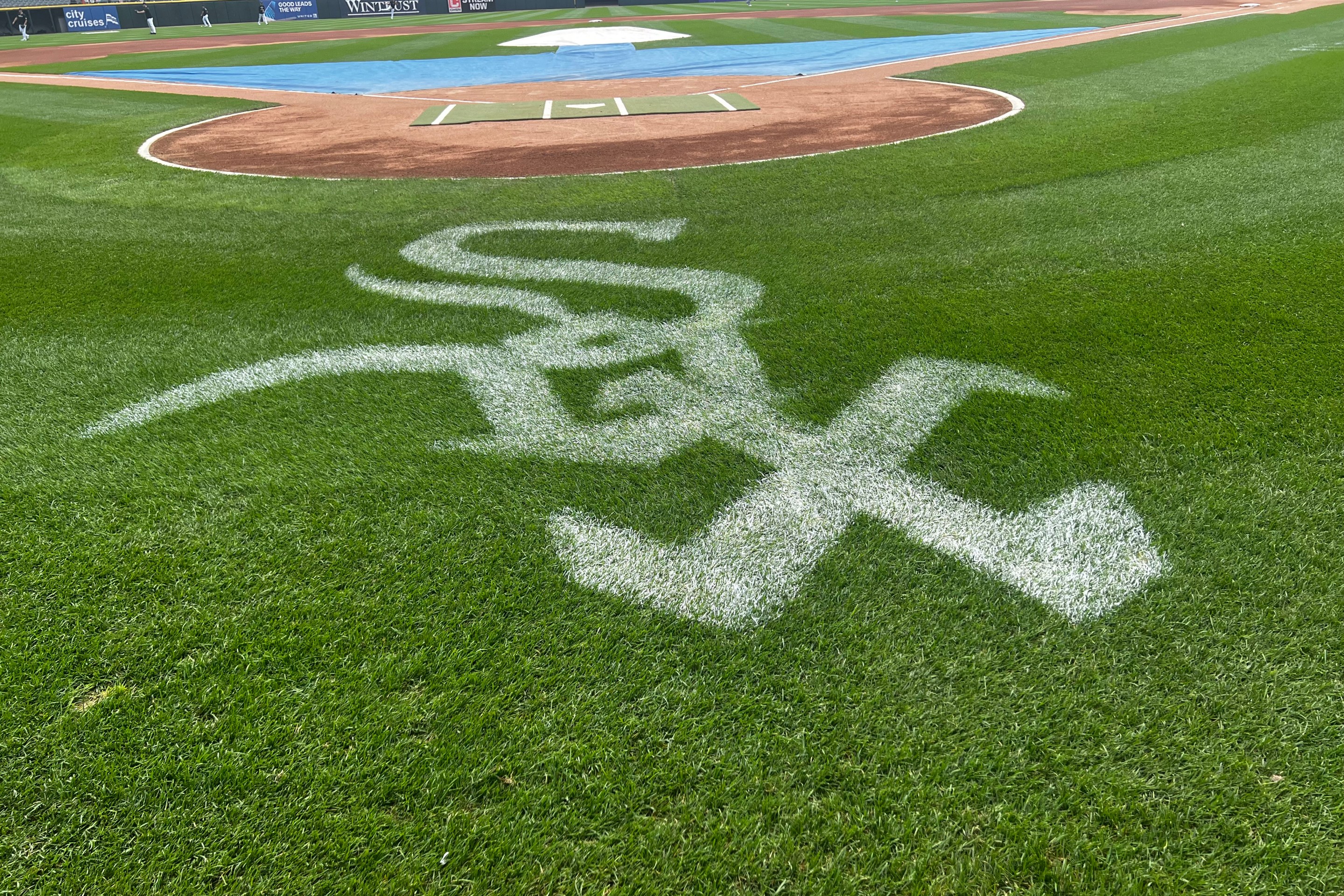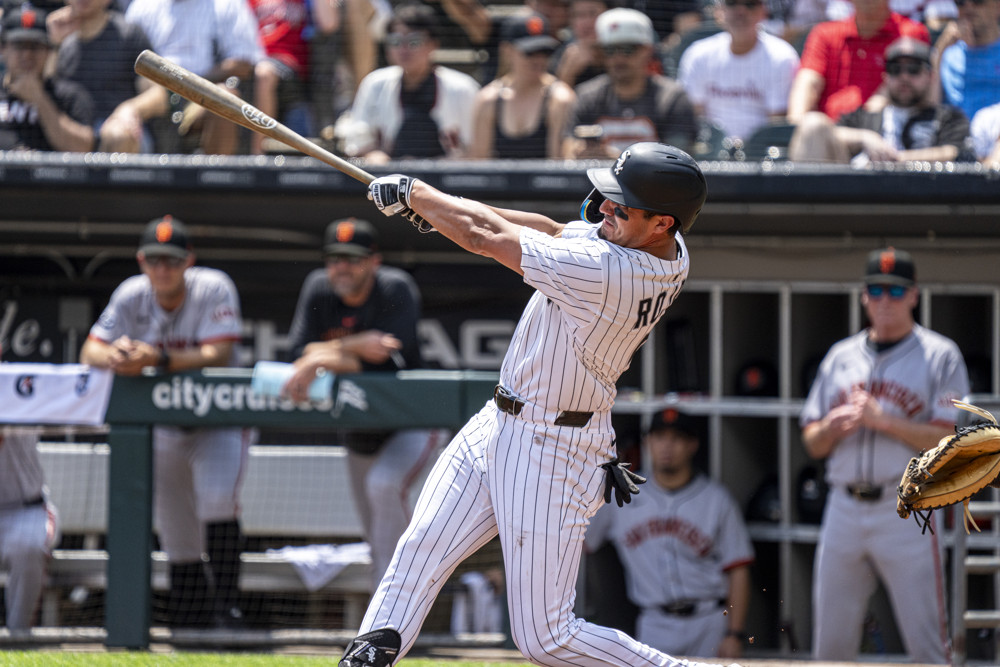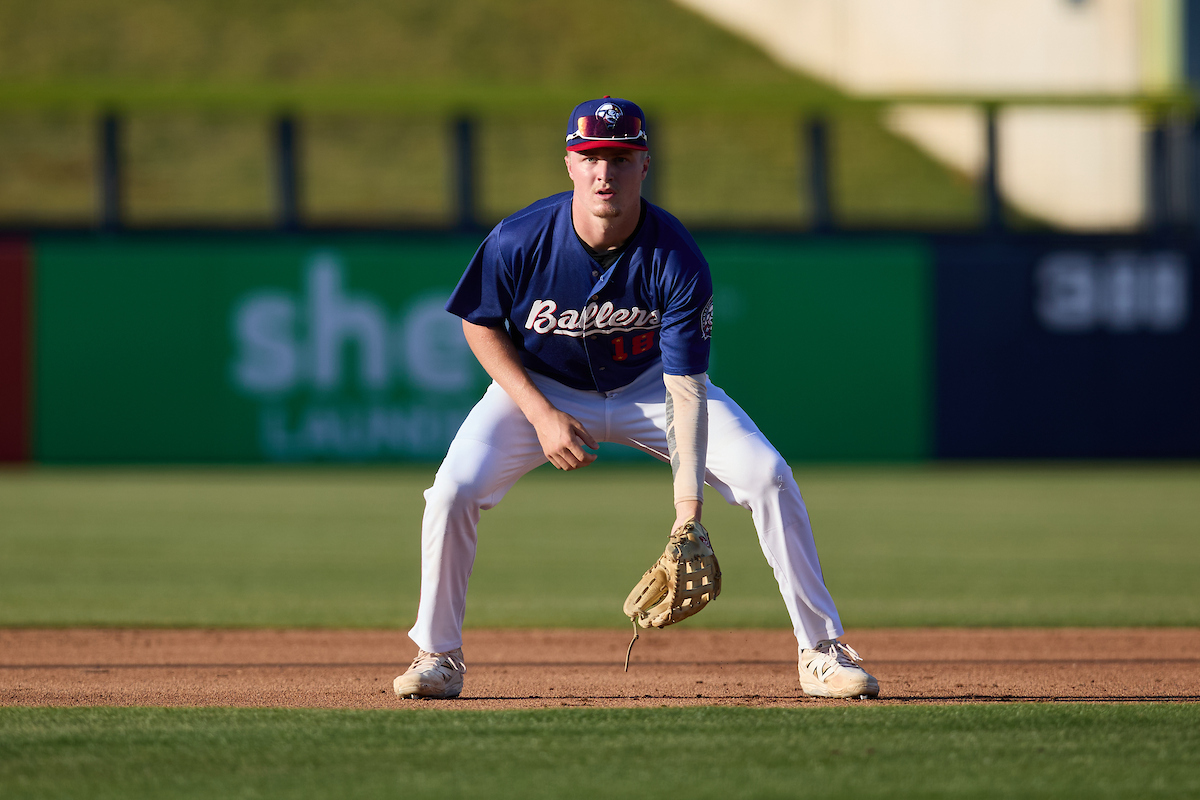For the third consecutive season, the Charlotte Knights set a record for pitchers used in a season. A whopping 54 different Knights took the mound, after using 51 pitchers in 2023, and 50 the year before that.
Considering the Knights had lost more than 90 games in each of the two other seasons they'd used 50+ pitchers -- and considering their better players weren't enough to help the big-league club avoid setting the modern MLB record for losses in a season -- you might extrapolate upon those trends and assume 100 losses wasn't out of the question.
Instead, the Knights were ... decent. They weren't good, but at 68-79, they were an ordinary kind of bad. That's progress for a team that occupied the International League cellar in each season since the pandemic.
Granted, they came within two games of the league's worst record, but four teams were worse. Parity reigned in the International League this season, as only three teams won 80 games, and no team losing more than 82.
How did the Knights manage to avoid disaster? it wasn't the offense.
| Hitters | Age | R/G | BB% | K% | AVG/OBP/SLG |
|---|---|---|---|---|---|
| Charlotte | 27.3 | 4.96 | 10.1 | 23.1 | .255/.337/.413 |
| League | 26.3 | 5.13 | 10.9 | 23.3 | .255/.344/.420 |
It'll be interesting when Baseball America unveils the next batch of minor league park factors, because for most of the season, the Knights lagged well behind the league average in homers, even though Truist Field is one of the league's coziest parks. They rallied late to finish the season with 158, but considering their pitchers gave up more homers than every other team but the Columbus Clippers with 183, the confines of their home field were used against them. They'll be well-prepared to see the same dynamic play out in Chicago.
Against considerable odds, their run-prevention units kept them respectable.
| Pitchers | Age | RA/9 | BB% | K% |
|---|---|---|---|---|
| Charlotte | 26.7 | 5.53 | 11.9 | 23.2 |
| League | 27.0 | 5.34 | 10.9 | 23.3 |
The Knights averaged a league-worst 6.62 runs allowed per nine innings in 2022, and 6.83 in 2023, so coming back to the middle of the pack in this category did wonders for morale. That's kind of a surprise given all of the Charlotte pitchers the White Sox shuffled through in hopes of finding a winning hand, but apparently the Knights bullpen featured a critical mass of fringe arms -- guys like Aaron McGarity, Adisyn Coffey, Nick Padilla, Chase Plymell -- to avoid collapse.
As for some other players who finished the season in Charlotte...
Position players
Colson Montgomery: After losing a couple months to oblique and back problems in 2023, Montgomery played 130 games in 2024, and saved some of his best baseball for last. Unfortunately, that's because a lot of the baseball beforehand was his worst. It all balanced out to a .213/.329/.381 line, thanks to a strikeout rate that ballooned to 29 percent. The idea was that he would earn a promotion during the second half of the season, but instead Brooks Baldwin ended up sneaking past him.
Because his performance didn't evolve much over the course of the season, we had plenty of time to attack it from a few different angles: how he struggled to make hard contact on pitches outside of his honeyhole, the changes hitting coaches recommended to reduce lower-half movements, and the snowballing frustration from the unprecedented struggles. He's young enough to absorb one bad year, but it does heighten suspicions about whether he can be the centerpiece of a rebuild movement, or if you should expect more of a role player.
Edgar Quero: Because nothing gold could stay with the 2024 White Sox, Edgar Quero's climb to a potential September call-up was blocked by a back issue in late August that sidelined him for five weeks. He was able to return to action for a few games to close out the Triple-A regular season, but he had to settle for a taxi squad appearance in the White Sox's final week.
Otherwise, Quero had the kind of year everybody had hoped to see from him, hitting .280/.366/.463 with 16 homers and 16 doubles over 98 games between Birmingham and Charlotte. Better yet, his Triple-A production looked like a prorated version of his Double-A line:
- Birmingham: .275/.360/.463
- Charlotte: .295/.382/.463
If you had to pick a nit, you could note that his walk rate dropped to 9 percent, out of its usual 14-15 percent territory, but gaining nearly 100 points of ISO from 2023 to 2024 made it feel purposeful. He's definitely more of a threat at the plate, and his catching development remains on track to stay behind the plate in the majors. He carries himself like a no-doubt big leaguer, and if it weren't for the back issue, he'd have answered all questions before an impending MLB audition.
Tim Elko: At some point, Elko's swing-and-miss issues inside the strike zone will force him to confront his ceiling, but Double-A and Triple-A pitchers didn't quite do it in 2024. He hit .289/.346/.439 with 18 homers, two triples and 23 doubles over an organization-leading 590 plate appearances, and his power leveled up after the jump to Charlotte, because he understood that people are supposed to hit there:
- Birmingham: .289/.338/.420 over 471 PA
- Charlotte: .289/.361/.472 over 219 PA
So what's the catch? The 173 strikeouts, mostly, because even though he's made some strides with his pitch recognition, the contact issues aren't entirely related to chasing. That's about the only thing suppressing enthusiasm, because he's received high marks for defense, and coaches love having him around.
Oscar Colás: 2023's Plan A in right field was strangely inconsequential in 2024. Granted, he didn't do much to draw attention to himself with his play at Charlotte, for better or for worse. He hit .246/.332/.401 over 109 games, a fitting summary of an offensive game where everything -- power, walk rate, strikeout rate -- were OK. He was called up a couple times for some extremely sporadic playing time with the White Sox, but despite putting up a decent fight in the batter's box -- 9-for-33 with four walks and an HBP -- nobody really cared to see him there. When asked about Colás' future, the answers from management were always diplomatic, but the actions spoke for themselves.
Pitchers
Nick Nastrini: The White Sox's first idea for the fifth starter spot ended up being out of the running at the end of the season, mostly because he ended up walking 88 batters over 120⅔ innings between his time in Chicago and Charlotte. He had a run of improved strike-throwing in mid-August that prompted a recall to the 26-man roster, and he posted his best outing of the season with six innings of one-run ball against the Rangers. Then he walked six batters over the course of five outs in Baltimore his next time out, and he never quite reglued the wheels the rest of the season.
He started the season with pneumonia, and he ended the season throwing two-inning appearances in relief, so most of his season was spent just ... off. A move to the bullpen is the likelier forecast, rather than expecting that he'll be able to sync up his arsenal and mechanics to remain steady for five or more innings at a time.
Ky Bush: Bush teamed up with Edgar Quero to make the Lucas Giolito-Reynaldo López trade at last year's deadline look like an out-and-out steal, at least for most of the year. The version the Angels traded was hampered by an incomplete return from a lat strain, but he returned to the mound in 2024 with restored velocity and improved control, at least for most of the season. His four-pitch arsenal was too much for Double-A hitters, who only hit .180/.265/.264 against him for 14 starts.
He split the second half of the season between Charlotte and Chicago, and while he pitched decently at Triple-A to merit a major-league audition, he was running on fumes over his last several outings. Between big-league jitters and a drop in velocity, Bush's total of free bases (30 walks, three HBPs) matched his strikeouts over his final 43⅓ innings. His season ended a few weeks early with an IL stint for what the White Sox called a triceps strain, and they recalled him to the 26-man roster before doing so in order to save an option. He'll go into next season with still all three remaining.
Mason Adams: For the second-straight season, the $75,000 signing threw too many quality innings to ignore. The most unheralded member of the Birmingham rotation was also the most consistent, hitting 103⅓ innings in just 18 outings by throwing at least five innings every time out. He posted a 2.44 ERA in Birmingham on the strength of strike-throwing with a kitchen-sink arsenal, which netted him a promotion to Charlotte in early August.
Adams' assimilation to Charlotte was interrupted by a back issue that limited him to just three erratic innings in his Triple-A debut, then put him on the shelf for nearly three weeks. When he returned to the mound, the White Sox limited his workload, but he still finished the year with 120 innings. He gave up 20 hits over 17 innings with Charlotte, which could be evidence of an approaching ceiling due to life in the low-90s. Glass half full, he had an underwhelming Double-A debut at the end of the 2023 season, then wasted no time becoming Sergio Santos' most reliable source of innings the next year, so perhaps suspend judgment until a fully recharged version of Adams takes the mound for the Knights in 2025.
Jordan Leasure: Two months into the season, the White Sox's grand idea to trade for a rookie reliever with high-leverage upside was going according to plan. He had a slightly lucky 2.18 ERA through his first 22 games, but he threw plenty of strikes, recorded a couple of saves and generally looked like he belonged.
He then gave up 17 runs over his last 10 MLB innings, which were scattered around a demotion to Charlotte and some missed time due to a shoulder impingement. The Sox sent him to Triple-A because they'd noticed his arm lagging behind his delivery, and the relative ease with which he handled International League hitters made it seem like he caught his breath. But the injury caused him to miss nearly two months, and the White Sox let him finish the rest of the season in Charlotte.
Even while he was succeeding, his velocity was more mid-90s than high-90s, so there's a chance that Ethan Katz hasn't seen Leasure at his best. Leasure logged enough MLB time to shed his prospect status, but he'll basically entered 2025 as he did 2024, with some proving to do in spring training before the White Sox give him a spot in the Opening Day bullpen.





